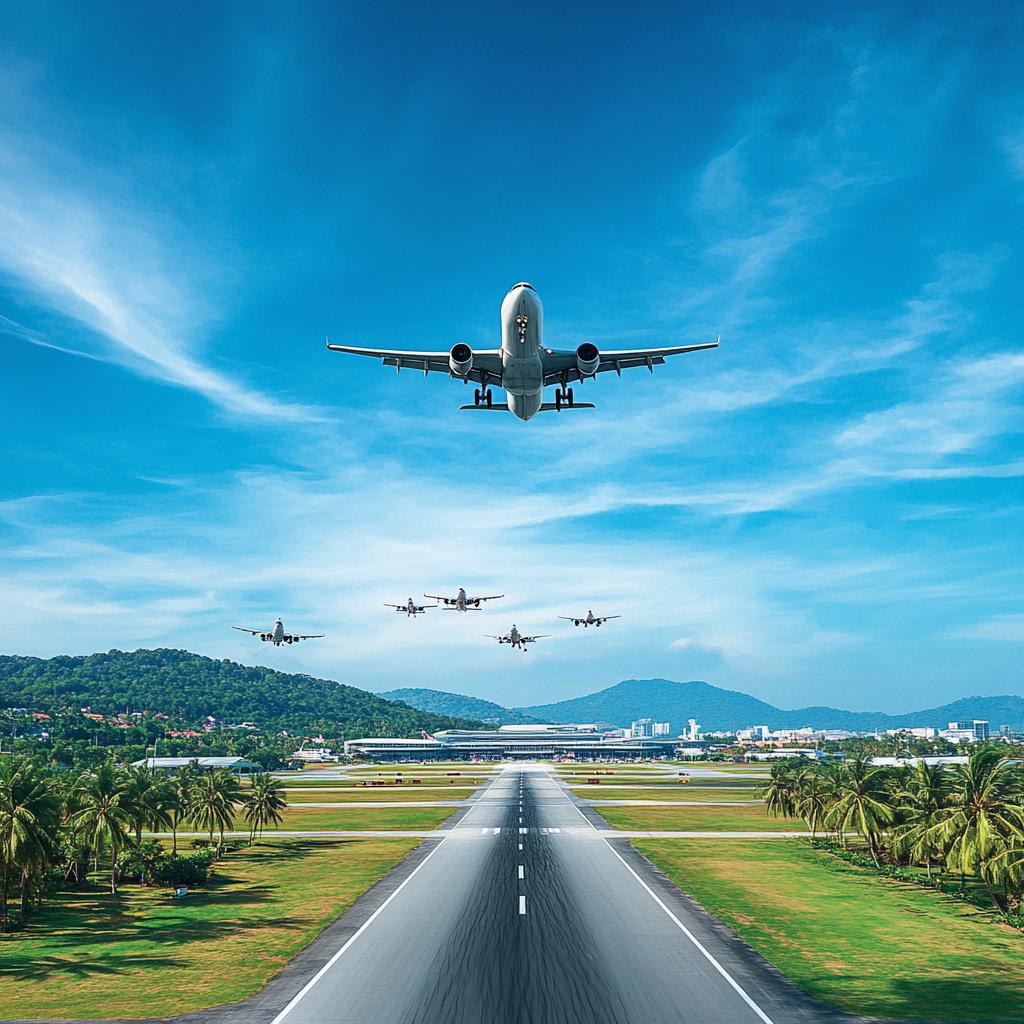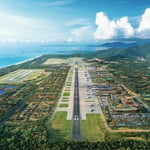With an ambitious vision and an eye on the future, the Thai Ministry of Transport is setting the wheels in motion to enhance the flight handling capacity of Phuket Airport. The bustling gateway is eyeing an impressive target of elevating its current capacity from 25 to 35 flights per hour by the year 2025. In an announcement as fresh as yesterday’s dew on February 27, Deputy Minister of Transport, Monaporn Charernsri, laid out AEROTHAI’s strategy—an intriguing roadmap designed to bolster one of Thailand’s busiest airports, just behind the mega-airports of Suvarnabhumi and Don Mueang.
Using the innovative prowess of Japan’s Fukuoka Airport as a blueprint, the ministry aims to turbocharge Phuket Airport’s operations. Fukuoka doesn’t just enjoy fame as a tourist hotspot; it’s also a masterclass in air transport management. Currently managing a jaw-dropping 38 flights per hour on its bustling single runway, Fukuoka is the epitome of efficiency. With a second runway already in the works, it’s setting an impressive benchmark for all to follow—including an international community keenly keeping tabs on its progress.
Back in Thailand, the study of Fukuoka’s dense air traffic magic is all about empowering Phuket Airport. The aim? To accommodate an inflow of tourists whose numbers swell by the day, thanks in part to Thailand’s attractive visa-free policies. It’s an endeavor that not only promises to uplift the service quality but also set the stage for a boost in tourist satisfaction levels. After all, who doesn’t love seamless travel experiences?
The trajectory of air travel from Fukuoka to the sunny shores of Thailand is already on the rise. Flights operated by Thai Airways, Thai AirAsia, and Thai VietJet carry excited passengers and crucial cargo between these two vibrant destinations. The data from October 2024 to January 2025 shows an overall increase in international flights by 23% compared to last year, with Japanese flights making a glorious contribution of 5% to these figures.
And the vision doesn’t stop at Phuket. A future-forward proposal is on the table for the Andaman Airport in Phang Nga province, meant to harmoniously connect with the surrounding Krabi, Ranong, and, of course, Phuket airports. Such strategic expansions are pivotal for mitigating space constraints and unlocking a smoother flight management symphony.
To make this dream a reality, AEROTHAI’s chairperson Pichet Kunathumrak has underlined the importance of adopting some groundbreaking air service strategies. Enter the High-Intensity Runway Operation (HIRO) initiative—a clever tactic aimed at reducing Runway Occupancy Time. Add to this the enhancements of the Rapid Exit Taxiway (RET) and the integration of Airport Collaborative Decision Making (A-CDM) with Air Traffic Flow Management (ATFM), and the future suddenly looks incredibly bright.
But wait, there’s more. Mundanely termed systems like Multilateration (MLAT) and the oh-so-futuristic Digital Towers are poised to paint a new horizon in air traffic management. Under the ingenious leadership of AEROTHAI CEO Naphasith Chakraphithak, the target is set—35 flights per hour by 2025, with hopes soaring higher to an ambitious 40 flights per hour in the years beyond.
As the world watches with keen interest, it’s clear that the aviation landscape in Thailand is poised for a thrilling transformation. With every well-calculated move, the goal is not only to uplift Phuket Airport but to position Thailand as a formidable regional aviation hub. The skies over Phuket are brightening, filled with promise, potential, and tourists with a thirst for new adventures.


















Increasing flights at Phuket Airport is great, but what about the environmental impact? Is anyone considering the carbon footprint?
Good point, Jonny! I hope the expansion includes sustainable measures. Airports should prioritize green technology.
Exactly! We need to think about renewable energy sources and carbon offsets. Otherwise, we’re just adding to the problem.
Couldn’t agree more. Maybe they should make eco-friendliness a part of their competitive edge.
I love the idea of Phuket becoming a major hub! It’s about time it gets the recognition it deserves.
True, Sara. Phuket is amazing, but don’t you think focusing on tourist numbers might just overcrowd the island?
Fair point, Oliver. Still, boosting the economy through tourism is important, and it could lead to better facilities overall.
Can’t wait to visit more often! More flights means cheaper fares, right?
Phuket’s expansion is a smart move. More flights mean more opportunities for local businesses. It’s a win-win!
Sure, but who actually benefits? Often just the big guys. Small businesses can get sidelined when airports grow.
I see your point. Hopefully, local governments ensure the benefits extend to everyone.
Fukuoka Airport’s efficiency is impressive. If Phuket can do the same, it’ll be revolutionary for Thailand’s aviation sector.
Sounds good in theory, but implementing it may be harder than it seems. Cultural and bureaucratic obstacles can be huge.
You’re right, Steve. It’s a challenging task, but with the right leadership and motivation, it’s possible!
I hope they don’t forget about the noise pollution with these expansions. It’s bad enough already.
Noise pollution is a huge issue. Let’s hope they invest in soundproof technology.
Thailand’s rising as a regional aviation key player—finally! Proud to see this development.
I share your pride, Chatchai! This will definitely put Thailand on the map for international travel.
The Digital Towers sound like science fiction! What exactly are they and how will they work?
They’re basically virtual control towers that use AI and radar tech for efficient monitoring. Pretty cutting-edge!
Fascinating! Hope they’ll also mean fewer delays.
Has anyone considered how this might affect local infrastructure? More tourists mean more stress on roads and services.
Wow, a second runway would be amazing, but it may disrupt local ecosystems. Can’t we balance development with nature?
Absolutely! Sustainable development should be key here. We can’t lose sight of preserving our environment.
Overall, this is a bright future for Thailand. Exciting times ahead for frequent travelers like me!
[…] This enhancement, inspired by efficient models like Fukuoka Airport, is supported by AEOTHAI’s strategic involvement in optimizing airport operations. Additionally, the airport targets a further increase to 35 flights per hour by 2025, aligning with long-term growth strategies 35 flights per hour. […]